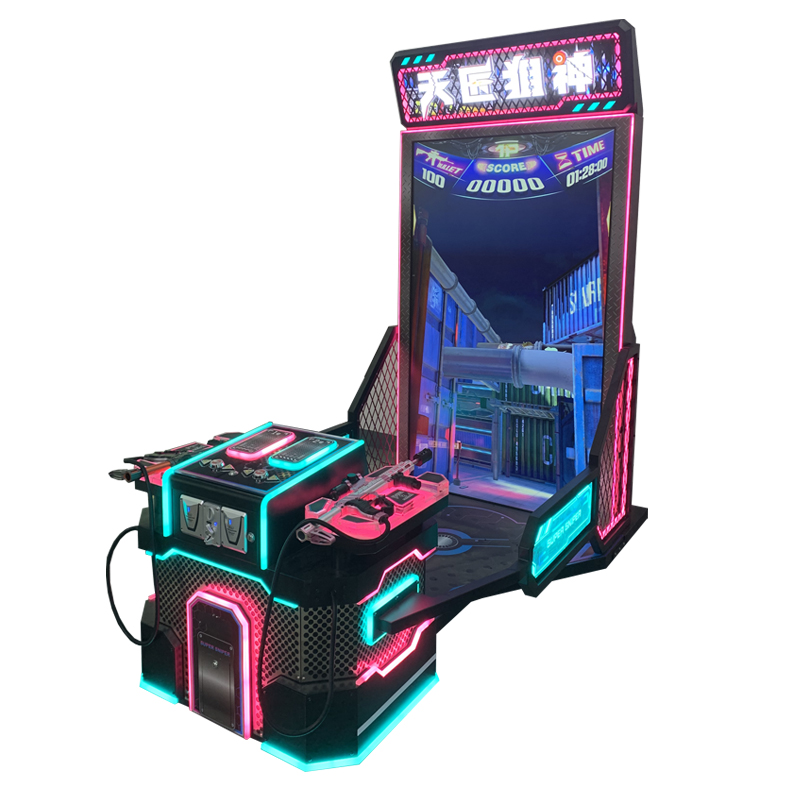The average arcade game lasts between 2 to 5 minutes per play, depending on the game type and player skill. Fast-paced games like Pac-Man or Street Fighter typically last around 3 minutes, as they’re designed to encourage multiple plays in a short time. Racing games and shooting simulators often allow longer play sessions, lasting up to 5 minutes. Some machines, especially redemption or prize games, may end even sooner, typically within 1 to 2 minutes.
Table of Contents
ToggleGame type determines game duration
The variety of arcade games means that the length differs between each game. As a rule, in shooter games, you must act quickly and do it within the shortest possible period of time. These games include all the classics like “Raiden,” “1942,” and so on. Typically, the enemy planes in these games are abundant and bullet hell-ish, putting each game time between 3 to 5 minutes. Mechanically skilled players can make the game last longer, but generally, fast-paced shooting games are for short bursts.
More well-known arcade games include fighting-style games in popular “Street Fighter” and “The King of Fighters.” Fighting games revolve around these small matches, lasting between 2 and 4 minutes each, where both players are trying to outsmart the other in real-time. Fighting games often follow a best-of-three format, so they are not time-consuming, but it is easy to see how much more skilled one player can be at navigating what their opponent might do on a better level.
But, racing games such as “Daytona USA” and the “Need for Speed” series have more time to play, with a length ranging from 5 to 7 minutes per game. Most of these games can vary in their length depending on track design, how well the player drives, and if they are familiar with the game or not. Challenging tracks will extend the time taken to finish, while learners may complete a course much quicker due to increased crashing and errors.
Puzzle games, like “Super Mario” and “Tetris,” rely on the reasoning skills of players as well as their speed to react. These games typically last longer per game, particularly in later levels where players are required to make higher-level thinking and decision-making, with rounds taking up to 7 or even 10 minutes. The type of play, especially in puzzle games, involves precise thinking processes that strengthen the challenge and longevity for any player.
Player skill level affects game duration
A major point of appeal for arcade games is how much they depend on the skills of the player. Newer players to a game will frequently turn off the game in very short order because they do not feel comfortable with the controls. They might fail within 3 minutes in the case of a shooting game such as “Raiden.” However, once players start to figure out how the game works, games last a lot longer because they are doing well.
Veteran players will learn the core gameplay mechanics in no time. In the case of “Street Fighter,” older players could get through opponents faster by mastering character combos and defense strategies, but can always extend game time simply by selecting higher difficulty opponents. Players can play longer than 10 minutes in a single game, especially with more players.

Strategic elements in game design
In fact, like a lot of other arcade games, developers have found that continually increasing difficulty is the key to player interest. An example of this would be games like “Breakout,” where the first few levels tend to need very limited use of controls. But as you advance in the stage, the game will get much harder with more difficult walls and faster ball speeds. Designers intentionally make enemies significantly more dangerous to accommodate this, thus ensuring the game is challenging but also swift in playtime. At the beginning levels, a game can usually keep players busy for 3 to 5 minutes; but in some harder stages, they may finish playing in just 2 minutes.
Moreover, certain games such as the “Contra” series offer a limited number of lives to players but do not allow them to start from where they left off if they fail at any point. While players can add to the game time by practicing over and over, this strategic choice overall influences how long each game lasts.

External factors affecting game duration
Apart from the design of a game and player skill, there are many other external factors that can determine how long someone plays. Arcade machines with the number of coins equal to how long players can play a game are an example. Playing in high-end arcades can be slightly more forgiving, maxing out how long a single coin drop will grant you playtime. Cities, neighborhoods, and other competitive locations could have the machine defaulted to a harder level of difficulty, which would truncate playtime to between one to two minutes.
The performance of a player also depends on environmental elements—noise and lighting have an effect. A noisy gaming environment makes it hard to concentrate, and mistakes are often made because players cannot get a good feel of game results (such as losing only due to reacting after the action). At the same time, in low-light environments, it is possible for players to operate without a clear view of the screen, which directly impacts game duration, especially when playing fast gun action games.








